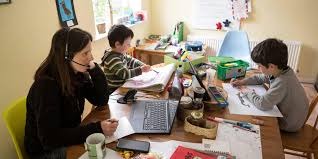Homeschooling: The Freedom and Strain of Learning at Home
Homeschooling’s no longer an outlier in the education world. These days, it’s a real choice on the table for many families. Whether driven by health concerns, dissatisfaction with public schools, or a desire for something more personal, more parents are turning their living rooms into classrooms.
But is it always the right move? Not always. Like anything that shifts the daily rhythm of a family, homeschooling comes with its own trade-offs—some empowering, others exhausting. Let’s walk through the realities, not the fantasies.

Room to Breathe, Space to Adapt
When a child learns at home, they’re not stuck with a cookie-cutter plan. If they love art and freeze up in math, parents can move more slowly in one area and lean into another. If mornings are hard, lessons can start later. If a bad day hits, there’s space to pause without falling behind.
This control over pace and style means kids who often feel out of place in traditional classrooms—due to learning differences, anxiety, or simply being out of sync with the system—can start to thrive. They’re not being rushed, compared, or boxed in.
That said, all that flexibility demands structure of a different kind. Without it, learning can become inconsistent, and progress gets patchy.
Close to Family, Maybe Too Close
Homeschooling pulls families closer—sometimes in good ways, sometimes in stressful ones. Parents don’t just watch their kids learn; they walk through every step of it. Every success, every breakdown. They’re teacher, coach, lunch-maker, and emotional anchor.
And that bond can be beautiful. Kids often become more confident and expressive when they’re not under constant peer pressure or noise. But too much togetherness has its limits. Parents get tired. Kids get annoyed. Some days, it feels less like bonding and more like surviving.
It’s not about loving your kids less—it’s about needing space, silence, and support. Without those, burnout creeps in fast.
A Different Kind of Social Life
This is where things get tricky. In school, kids learn to navigate all kinds of relationships—from best friends to playground bullies. Homeschooling shifts that dynamic. Social time isn’t automatic. It has to be planned. That can mean meetups, co-ops, sports leagues, or playdates.
Some families are great at this. Others live in places where options are limited. And even with effort, it’s not always enough for teens who want that daily buzz of being around others their age.
That said, some kids need the social reset homeschooling offers—especially those who’ve been bullied, overstimulated, or left behind in group settings. But for others, the isolation hits hard, and the lack of peer interaction can feel like a missing puzzle piece.
Money, Time, and Pressure
Homeschooling costs can sneak up. Curriculum packages, printers, materials, tutors—it adds up. And then there’s the time. Teaching takes hours. Planning takes more. Parents often find themselves researching subjects late into the night or scrambling for creative ways to explain fractions to a tired 10-year-old.
Many have to cut work hours or stop working altogether. That trade-off—time for money—isn’t possible for every household. And even when it is, it takes a mental toll.
It’s not just about knowing what to teach. It’s about holding space for learning and parenting without losing yourself in the process.
Coverage and Confidence
Public schools come with resources—trained teachers, labs, field trips, school counselors. Homeschooling puts the burden of filling in those gaps on families. Some build rich environments filled with books, art, and hands-on projects. Others struggle just to cover the basics.
High school is a bigger lift. Advanced math, science labs, essays—it’s hard to tackle without outside help. Some parents turn to online classes or community college. Others feel overwhelmed trying to prepare their teen for college without guidance.
There’s no shame in needing support. The challenge is making sure it’s there when it’s needed.
What If It Doesn’t Work?
This part doesn’t get talked about enough. Sometimes homeschooling doesn’t fit. The child hates it. The parent feels crushed. The lessons go unfinished. That doesn’t mean the family failed. It means the setup didn’t match what everyone needed at that time.
Families can return to school. They can try hybrid models. They can switch curriculum styles or take a break. Flexibility doesn’t have to stop once you’ve committed to homeschool.
The goal isn’t perfection. It’s building a learning life that makes sense for the people living it.
Last Word: It’s a Tool, Not a Statement
Homeschooling isn’t a moral stance. It’s a tool. For some, it works beautifully. For others, it’s a rough road that ends in frustration. Most families fall somewhere in between—figuring it out as they go, reshaping their days, questioning whether they’re doing enough.
That’s okay.
Education isn’t just about lessons and grades. It’s about connection, confidence, and growth. Whether that happens in a school or at home, what matters most is whether the child feels seen, supported, and capable.
The rest? That’s just logistics.




